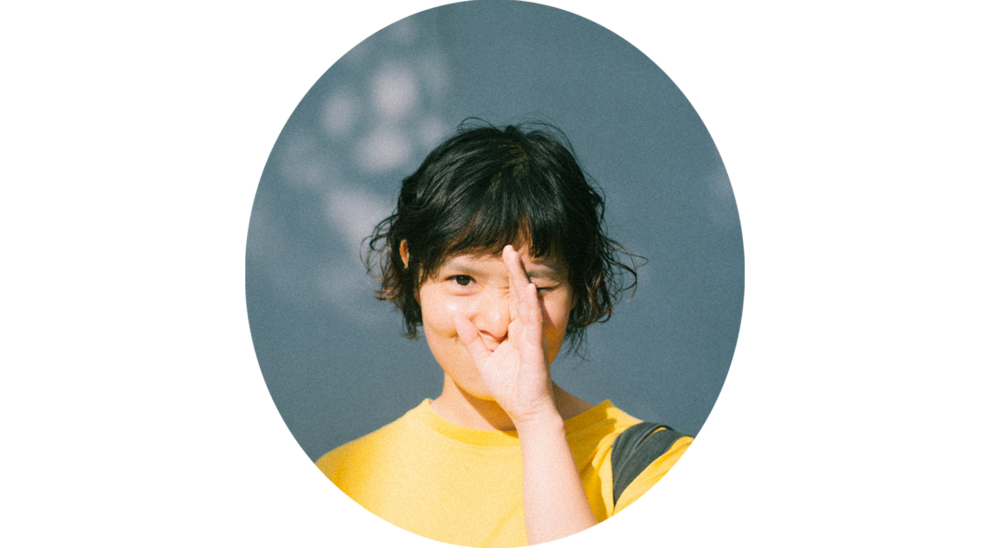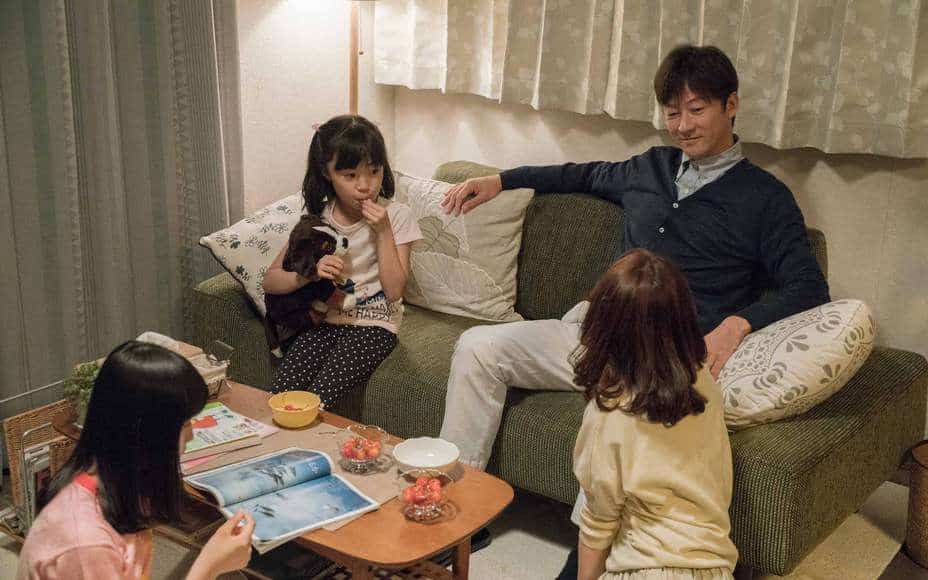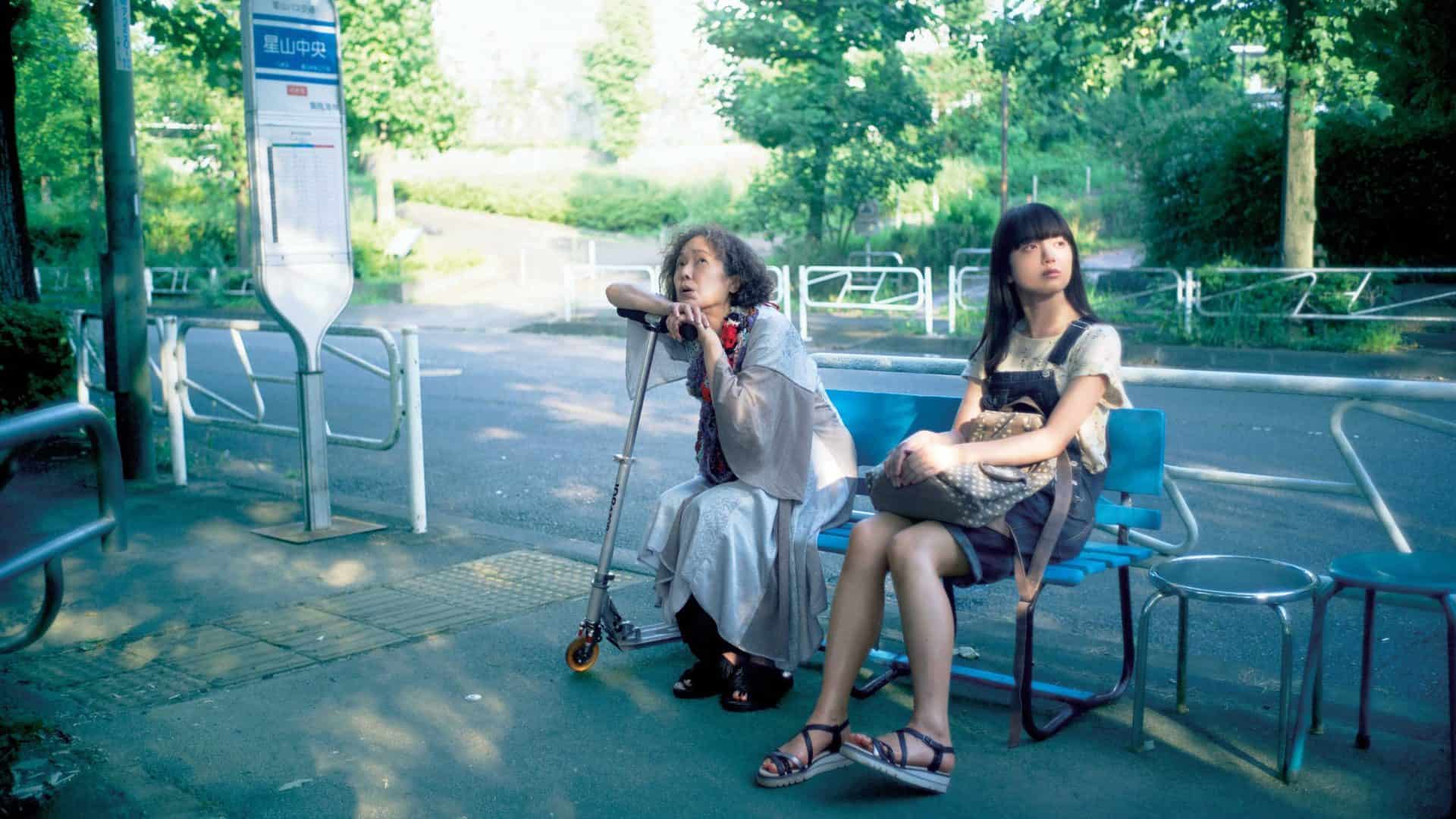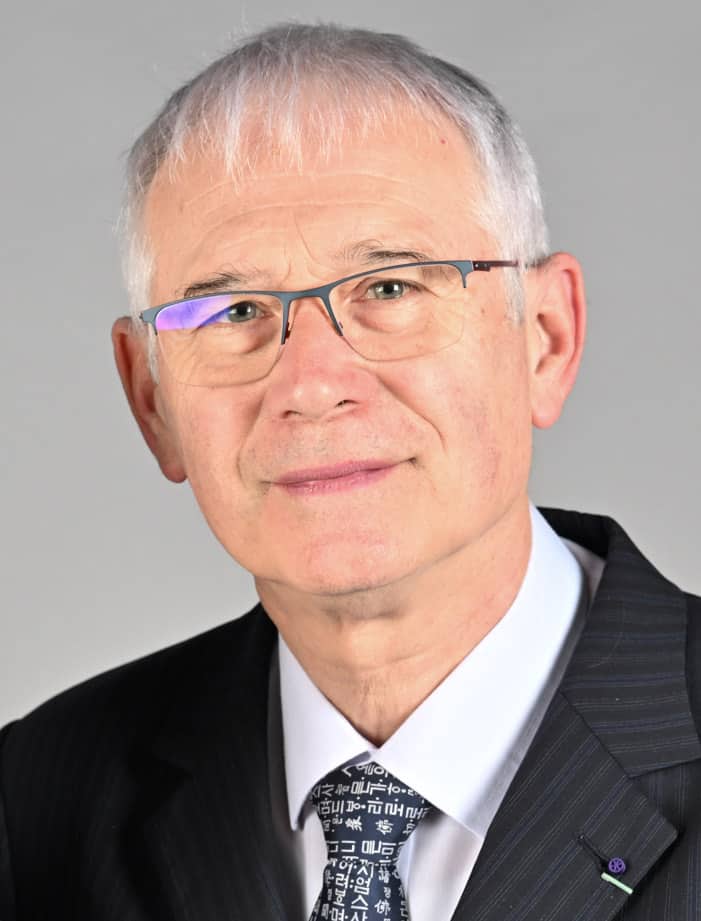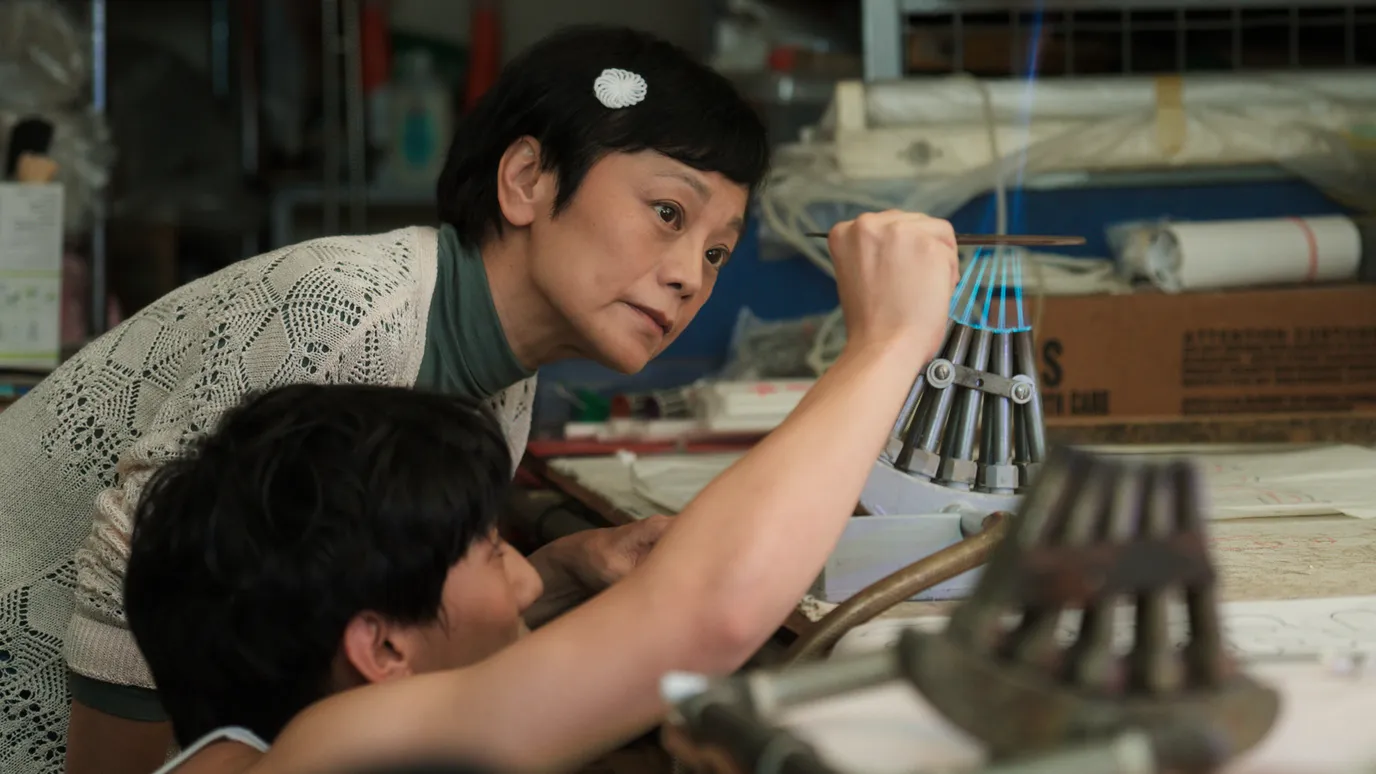Hailing from Singapore, Gladys Ng's films have left mischievous breadcrumbs across the world. Most known for her widely traveled, surreal short drama, “Still is Time”, the writer-director's career has seen a trail of poignant, delicate vignettes. Tales of urban loneliness, loss, hope and wonder meld in the quaint imaginations of Ng's characters. But never mistake their quietude for frailty. Underneath a genre veneer of realism, a dreamlike tussle emerges into play. When thinking of Gladys Ng's films, one might say that life is, indeed, rather strange. Boasting a new short this year at Oberhausen and Busan Shorts, curiously titled “Every Floor Looks The Same”, we wrote to the filmmaker, asking about her inspirations, practice and how the magic happens.

Tell us a little more about “Every Floor Looks The Same”.
I think the years during covid had changed me. It gave me time to reflect on serious matters, while at the same time I've taken a more relaxed and humourous approach to life, and that attitude has somewhat worked its way into my newer works I guess. I've been more experimental and playful with the art-making process, and it has been liberating so far!
“Every Floor Looks The Same” is an experimental comedy that follows a girl, Osmanthüs, who wanders the city in search of a lost bird. Through her, we get to see glimpses of Singapore in ways absurd, funny and sad.
You've directed several short films, most of them set in or around the environment of Singapore, following a protagonist who sort of observes life from the sidelines. Was this a conscious choice, and how do you feel about it?
It's really a subconscious thing! Haha, I've never thought about it that way until you pointed it out. I guess my characters tend to be sensitive beings at the tip of breaking point, but somehow there's a certain strength within that fragility?
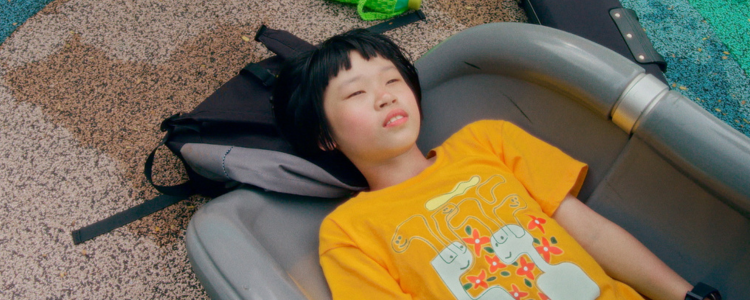
Out of curiosity, I wanted to ask about the many interesting locations in the film: the mangosteen dome, the undone buildings at the end and more. They anchored much of how I felt throughout the film, and they felt familiar but also otherworldly. How did you go about finding these places, and what importance did they have for you?
I wanted the film to be an oxymoron in a visual sense. Ever since I discovered the mangosteen, I knew I wanted to set something ‘cause it's so cute!!! It reminds me of Yayoi Kusama's pumpkin on Naoshima. It also reminds of the watermelon playground and other fruit/ animal themed ones. In the film, it can perhaps symbolise a facade, to look a certain way on the outside, but not necessarily feel the same on the inside.
The undone buildings were actually really hard to find. My producer, Sophia Sim, and I spent many weekends going around scouting for a location. It's easy to find construction sites since we are always building, but it was extremely hard to find one that was safe to shoot at. We see literally the title — every floor looks the same. And it is also the last time the audience sees Osmanthüs, so it's a really important location.
Check the review of the film
Throughout the film, we hear construction sounds, and at the end we see where it is coming from. The buildings can mean so many things, but one of them is the stripping down of the facade (whatever it is to us, happiness.. success.. ), and realising that on the inside we're all the same. But these are just some of the intentions (from) setting out to make the film. I enjoy listening to how people feel after watching the film, and what each scene and gesture meant to them, so I'm very happy to leave it as an open invitation for you and the audience to apply your own meaning to the film.
Going off this, there is also quite a prominent use of architecture in your other short films. These textures and structures of objects, buildings and furniture appear a lot. Have they always held large meaning or emotion for you?
The space in which a character inhibits does so much. It affects their decisions… gives us a clue as to how they're feeling inside… The fathers in “My Father After Dinner” and “Still Is Time”, are both finding their footing in their changing world. So the world is very important, and we placed a lot of emphasis on finding locations that feel right.
Also Singapore's landscape is all tall buildings, how to avoid shooting them? Haha, it's such an integral part of the living experience here.
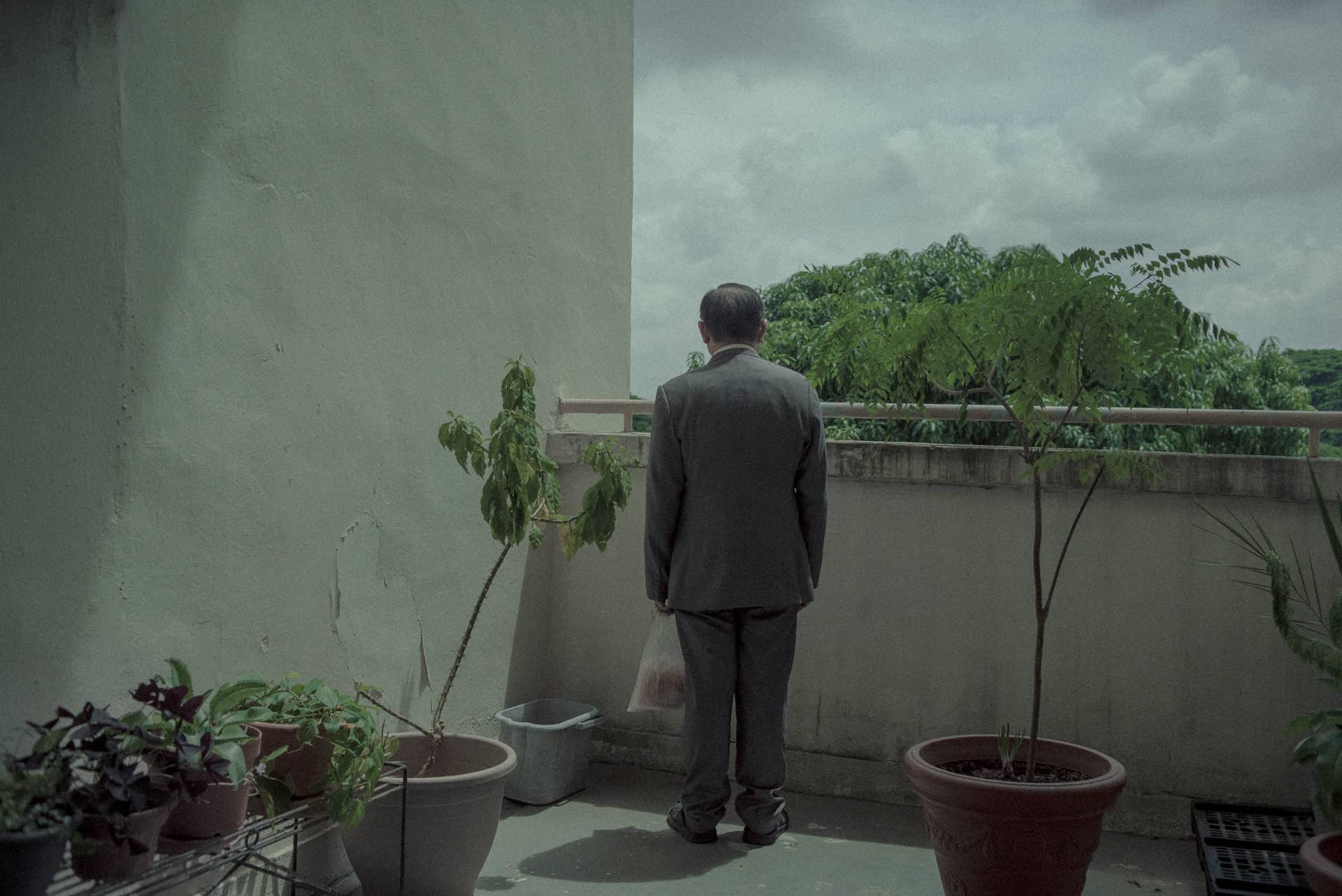
I'm interested in how your films seem to always center around moments. In a way, they are very slice-of-life, and many of your key scenes have such a lightness to it that makes it feel so real, and almost like improv. For example, a strong one for me is the moment when the father in “Still is Time” encounters the young schoolgirl. How do you go about scripting and directing these moments?
That's my favourite scene in “Still Is Time”! Once the DP and I start conversing in pre-production, we don't rely on the script as much as allowing the process to be more fluid. I prefer to work with what's tangible and in front of me, and the result is — scenes that feel like they were improv-ed (but in fact, all planned) that I would never have conceived when I was just purely writing. Working with others is also a good chance to see from another perspective and allow for what they can bring to the film.
DP credit:
“My Father After Dinner” – John Maloney
“Still Is Time”, “Under the Same Pink Sky” – Tan Kang Wei
“The Pursuit of a Happy Human Life”, “Every Floor Looks The Same” – Nicole Chai
When I was in uni, a professor asked the class, why must your story be told with the film medium? Why film and not, say, a novel or something? So with each work, I constantly question myself and others. What makes a film filmic?
What are you working on next?
A new project entitled, “Every Mall Burns The Same”, about a disenchanted office lady who is sick of the daily humdrum.
But I spend most of my time working and saving money because I want to get a HDB this year, so creative work is on the back-burner until I find yet another renewed sense of life!


